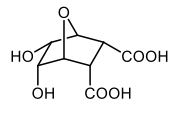In the study of addition reactions involving furan, it is essential to understand the structural and electronic characteristics of heterocyclic compounds. Furan, along with pyrrole and thiophene, can be conceptualized as derivatives of butadiene, which consists of four carbon atoms and two double bonds, classifying it as a diene. The reactivity of these five-membered heterocycles as dienes is significantly influenced by their aromaticity.
Aromaticity refers to the stability of a compound due to the delocalization of electrons within a cyclic structure, which is enhanced by resonance. However, the aromaticity of these heterocycles is inversely related to the electronegativity of the heteroatoms present. As the electronegativity of the heteroatom increases, the aromatic resonance stability decreases. This relationship can be visualized on a spectrum where increasing aromaticity corresponds to decreasing electronegativity.
For instance, sulfur, nitrogen, and oxygen are the heteroatoms in question, with sulfur being the least electronegative, followed by nitrogen, and oxygen being the most electronegative. Consequently, furan, which contains oxygen, exhibits the highest electronegativity but the lowest aromaticity among the three compounds. In contrast, thiophene, with sulfur as its heteroatom, has the highest aromaticity despite being the least electronegative. This fundamental difference in aromaticity and electronegativity leads to distinct reactivity patterns in these compounds, particularly in their addition reactions.
In summary, the inverse relationship between aromaticity and the electronegativity of heteroatoms is crucial for predicting the behavior of furan and its analogs in chemical reactions. Understanding this relationship allows for a deeper insight into the mechanisms of addition reactions involving these heterocyclic compounds.



